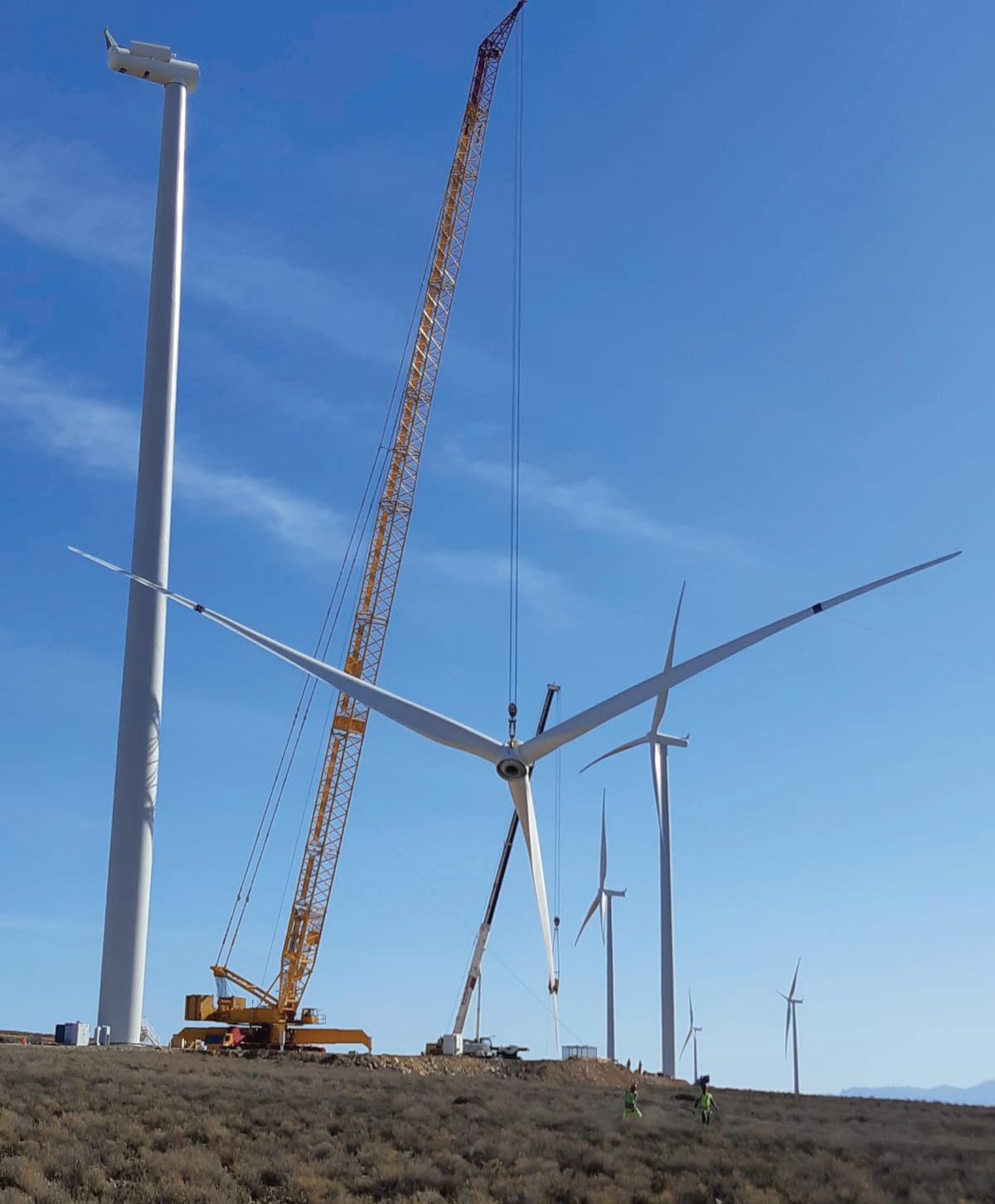
4 minute read
Energy
The Western Cape wants a bigger role for cities in the energy sector.
Just days before a case between the City of Cape Town and the National Energy Regulator of South Africa (Nersa) was heard in court, Mineral Resources and Energy Minister Gwede Mantashe published draft amendments which provide for some role for municipalities in the generation and procurement of electricity.
Advertisement
Judgement in the case was reserved but the city is pushing ahead with its case, the minister’s input notwithstanding. The fact that Cape Town has an Executive Director for Energy and Climate Change is an indication of how seriously it treats the issue. Ultimately the city wants to be allowed to procure power from independent power producers (IPPs) and to see a national programme put in place.
South Africa’s acclaimed Renewable Energy Independent Power Producer Procurement Programme (REIPPPP) attracted about R200-billion in committed investments, mostly in solar and wind power, in just five years.
The early rounds of the independent power producers’ programme continue to produce regular dividends. In October 2020, another wind farm started commercial operations. The Paardekraal East Wind Farm, which is located about 80km north-east of Ceres, is in the Witzenberg Local Municipality. The 110MW project was constructed by the Concor and Conco Consortium, Siemens Gamesa Renewable Energy supplied and installed the wind turbines, the towers were built by GRI in Atlantis and Mainstream Asset Management South Africa will manage the operations.
According to the Department of Energy, the REIPPPP by 2016 had created more than 30 000 jobs and benefited local community development to the tune of R256-million. Figures released by the South African Wind Energy Association (SAWEA) showed shareholding for local communities reached an estimated net income of R29.2-billion over the lifespan of the projects. Some 14 000 new jobs are expected to be created, mostly in rural areas, and more than R30-billion has already been spent on Black Economic Empowerment (BEE) in the construction phase.
The support of two of South Africa’s biggest institutional investors, the Industrial Development Corporation (IDC) and the Public Investment Corporation (PIC), has been crucial in getting the renewable energy sector off the ground. They have also helped communities fund their participation in community trusts. Typically, a community trust is established to represent the interest of the local community.
Investment by black people into the renewable energy programme is not limited to community trusts. Pele Green Energy is engaged with a photovoltaic plant at Touwsrivier in the Western Cape as a shareholder and as a provider of construction management services. Once the facility starts generating power, Pele will operate and maintain the plant.
In his 2020 State of the Province Address, Premier Alan Winde said, “The wind and solar resources in South Africa are so plentiful that using only 1% of our land, renewable energy could produce over six times the amount of energy that Eskom produces today.”
The Western Cape Provincial Government has a four-point energy plan: 1. Help municipalities to procure energy from IPPs. 2. Increase small-scale embedded generation like solar PV to decrease reliance on the national grid. 3. Increase the greening of government buildings, 17 of which already have solar systems. 4. Increase efforts to import
SECTOR INSIGHT Paardekraal East Wind Farm has started commercial operations.
Liquefied Natural Gas through Saldanha Bay and enable Eskom’s Ankerlig plant to operate on LNG rather than diesel.
Recent gas finds by Total off the coast of Mossel Bay will accelerate the drive to switch to gas.
The idea of home-owners being able to sell surplus electricity from rooftop solar systems was previously restricted to the Cape metropolitan area. The application of the provincial government’s Energy Security Game Changer has expanded this provision (via bylaws) to the whole province. There are 23 municipalities where rooftop solar PVs are connected to the electricity grid, 13 of which have nationally approved tariffs in place. Users in the 13 areas can be paid for the power they supply. The uptake of solar has risen from 20MW in 2015 to more than 112MW in 2019.
The City of Cape Town has signed an agreement with the United States Agency for International Development and the Southern Africa Energy Programme to look for ways to make solar PV more accessible. High costs of installation often preclude residents from taking the solar PV option for their homes.
The Western Cape is positioning itself as a green business hub and is working to find energy alternatives for households and businesses. Greater Cape Town is home to 70% of South Africa’s manufacturers of renewable components.
Green Cape states that nearly R700-million in green technology investments has already been attracted to the Atlantis Special Economic Zone, creating 300 jobs. A further R3.7-billion is anticipated by 2030, which will add more than 3 000 new jobs. Spanish wind tower manufacturer Gestamp Renewable Industries and tower internals supplier Resolux (from Denmark) are early investors in the zone.
Green Cape is an agency that does research and runs projects in areas such as energy efficiency, waste, water and sustainable agriculture. It is a joint initiative of the City of Cape Town, Wesgro and the Provincial Government of the Western Cape. The Western Cape Industrial Symbiosis Programme (WISP), which encouraged manufacturers to use the waste product of other businesses, won international recognition in 2018 at the Circular Awards at Davos. ■
ONLINE RESOURCES
Atlantis Special Economic Zone: www.investcapetown.com Green Cape: www.greencape.co.za South African Renewable Energy Technology Centre: www.saretec.org.za South African Wind Energy Association: www.sawea.org.za Perdekraal East Wind Farm







